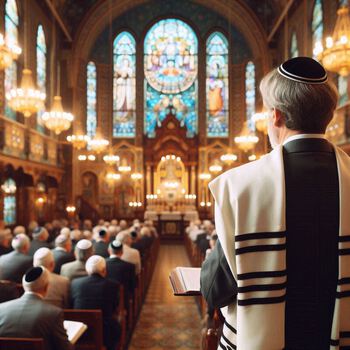Mishpetei Erets Responsa (Volume II)
 תגיות
Institute books
תגיות
Institute books

 Mishpetei Erets Responsa
Mishpetei Erets Responsa
Responsa in Matters of
Law and Business | Usury | Charity
Chaim Yoel Bloch
Daniel Katz
Ido Rechnitz
The following participated in the writing of the Responsa:
|
Rabbi Itay Elizur Rabbi Yaakov Binyamin Rabbi Eliyahu Gurfinkel Rabbi Elazar Goldstein Rabbi Hillel Geffen Rabbi Aryeh Wulhandler Rabbi Avi Vangrover |
Rabbi Natan Hay Rabbi Yehuda Yifrach Rabbi Nadav Kohen Rabbi Shmuel Polchack Rabbi Yair Frank Rabbi David Steinmetz
|
Ofra 5773-2013
contents
Foreword / Rabbi Avraham Giesser................................ v
Preface............................................................................. 15
The Jewish Law and the Secular Law........................ 19
The Laws of the Torah and the Laws of the State of Israel 21
Procedures of Adjudication in a Rabbinical Court....... 31
Suing in Secular Court.................................................... 39
Halachic Issues for Lawyers........................................... 53
Loans and Usury................................................................ 67
The Laws of Loans.......................................................... 69
The Prohibition of Usury................................................ 80
The "Hetter Iska" – Contractual Device to Obviate the Prohibition of Usury 99
The Laws of Neighbor Relations............................... 107
Homeowner Council..................................................... 111
Damages Stemming from the Activities of Neighbors 120
Disputes Between Neighbors on Property Usage and the Building of a Dividing Fence 129
Commercial Issues........................................................ 139
Cancelation of Transactions......................................... 142
Mispricing and a Sale Voided Due to a Flawed Object 158
Assorted Topics............................................................. 176
Rentals and Watchmen................................................. 187
The Obligations of Watchmen...................................... 189
The Creation and Termination of a Rental.................. 203
The Conditions of Rentals............................................. 213
Responsibilities of the Sides in Rentals........................ 223
Charity............................................................................... 233
Rates of Giving Charity................................................ 238
Eligibility to Receive Charity........................................ 252
The Status of Collected Charity Funds........................ 264
Additional Topics........................................................... 271
Lost and Found Objects................................................ 273
Laws of Agents.............................................................. 292
Inheritance and Wills.................................................... 296
The Religious Propriety of a Business........................... 304
The Cancelling of Debt at the End of the Sabbatical Year 313
About the Sources.......................................................... 319
Topical Index................................................................... 329
Sources Index.................................................................. 340
Foreword
For a judge rules only according to what his eyes see and he has the right to say that right is left and left is right, according to the matter and according to the person and according to the time and according to the place …
(Kli Yakar, Exodus 28:15)
The Mishpetei Eretz Institute, The Advanced Institute for Halacha and Jurisprudence, has always been active in the dissemination of the Torah’s laws of jurisprudence throughout Israel. The broad field of jurisprudence is the heart of the Torah of the Jewish Nation. One essential and practical expression of this concept is the “Breastplate of Justice,” which was set on the High Priest’s heart when he did his holy service. This is related in the verse: “And Aaron would carry the names of the Children of Israel on the Breastplate of Justice upon his heart, when he goes into the holy place, as a constant remembrance before the Lord” (Exodus 28:29). This is the full appearance of the High Priest before God in the Holy Temple. The “justice” is the heart, and it is referred to as “a constant remembrance.” [1]
In the order of making the garments of the Priests, it says: “And these are the garments that they will make: a breastplate, an apron, a robe, a tunic of box-like knit, a turban, and a sash. And they will make the holy garments for your brother Aaron and for his sons so that they shall serve for me” (Exodus 28:4). The breastplate is mentioned first, as is fitting. However, immediately thereafter (ibid. 6), in the description of the actual making of the garments, the Torah opens specifically with the apron (“and they made the apron”). Why is there such a change in order?
The Talmud (Arachin 16a) teaches of the different roles of atonement of the garments of the High Priest:
Breastplate – atones for judgment …
Apron – atones for idol worship …
Robe – atones for harmful speech …
Headplate– atones for the actions of the brazen …[2]
Based on this set of atonements, the author of the Kli Yakar (Rabbi Ephrayim Lontshitz, b. 1540 (Poland), d. 1619 (Prague)) explained the changed order mentioned above in the following manner:
According to this, we can reconcile why God mentioned the breastplate before the apron, for God is more concerned with impropriety in matters of justice than He is concerned with idol worship. The proof is from the generation of the Tower of Babel, who sought to fight God and was not destroyed, whereas the generation of the Great Flood was destroyed due to the theft and plundering that existed among them…
For the Holy One Blessed Be He is willing to forgive and overlook idol worship, but not impropriety in justice between man and his fellow man, for God forgives only offenses that are between Him and people.
Kli Yakar, Exodus 28:4
In the description of the making of the breastplate the verse (Exodus 28:15) says: “You shall make a breastplate of justice, a work of weaving, like the making of the apron you shall make it.” The description as “a work of weaving” is found only in regard to the breastplate and the apron, and is not found in the description of any other garments. This is because in these two areas – the area of pure belief and the area of the law and the purity of jurisprudence – everything follows the thought process (the same root is found in the Hebrew words for both thought and weaving). Based on this, the Kli Yakar continues:
For matters of justice are things that are entrusted to the judge’s heart, for a judge can rule only according to what he sees with his own eyes, and he can therefore say that right is left and that left is right, according to the matter and according to the person and according to the time and according to the place. If the judge will say that this is what seemed to him to be correct, who will be able to contradict him, except God, who evaluates the hearts of every person. That is the reason that the breastplate was placed on Aaron’s heart – as matters of justice are entrusted to the heart, and that is the reason that this woven article (with the double meaning of thought) atones for the thought of the judge.
This is the reason that the breastplate was made similarly to the apron. Its length was a zeret (half a cubit) because impropriety in matters of justice causes the destruction of the world. Its rectification is similar to becoming a partner with the Creator in the creation of the world, as it says in Isaiah (40:12): “The heavens He measured with a zeret.”
The broadmindedness and the definitions used by the author of the Kli Yakar provide the Torah’s concept of justice and its specific laws with a unusual broad and lofty place. Rulings and interpretation of the law are given over to the thought process of the judge and to the purity of his heart, “according to the matter and according to the person and according to the time and according to the place”!
Most responsa cited in this book of responsa give expression to the breadth of thought of the responding rabbis and their sense of responsibility to factor into their thought process the time, the place, the matter, and the person asking the question. Many of the questions are dependent on the period in history. Especially, many are related to the blessed fact that there is a State of Israel, in which there are a judicial system and a system of laws, rules of the workplace and civil rights, social justice and rules for the betterment of society. All of these factors and others make it necessary to establish the halacha and the religious judicial approach in relation to the situation at this time and place in order that our judges will be able to issue “rulings that are true in the most truthful way.”
May it be His will that this work will be accepted and that the Torah will be disseminated, and our national bodies of justice will return to their original state and the righteousness of our rulings as they were in the beginning, so that we will be fit to be called a city of justice and a faithful Jewish society.
Rabbi Avraham Giesser
Chairman of the Board of the Mishpetei Eretz Institute
and Rabbi of Ofra
[1]. “Remembrance” is the biblical word used for the power of adjudication and the constant obligation of adjudication. For example, Rosh Hashanah, which is the Day of Judgment for all of mankind is called “The Day of Remembrance,” and the actions of adjudication is specifically the “remembrance,” as we say “Remember us for life” or “He who remembers the covenant” at the conclusion of the blessing of Zichronot.
[2]. For the identification of every garment along with the corresponding atonement there are textual and philosophical supports. The breastplate is, after all, called the “breastplate of justice.” The apron corresponds to the “apron and icons” found in the story of The Idol of Micah (Judges 18). One should take a look there, as the matters require a broader explanation than we can provide here.
הרשמו לקבלת עדכונים

איסורי ריבית בכיבודים בבית הכנסת

ספק במתנה: האם החותן נתן את הכסף ללא תנאים או שהייתה כוונה להחזר?
זכויות בעל הקרקע מול החזקת הרבים- מיצר שהחזיקו בו רבים

תשלום דמי שכירות על תקופה שבה הבית לא היה ראוי למגורים

שימוש בקיר משותף לאחר שהפסיקו להשתמש בו

הלוואה ממקום עבודה, שמצויין בה סכום הריבית אך זאת אינה נגבית בפעל
